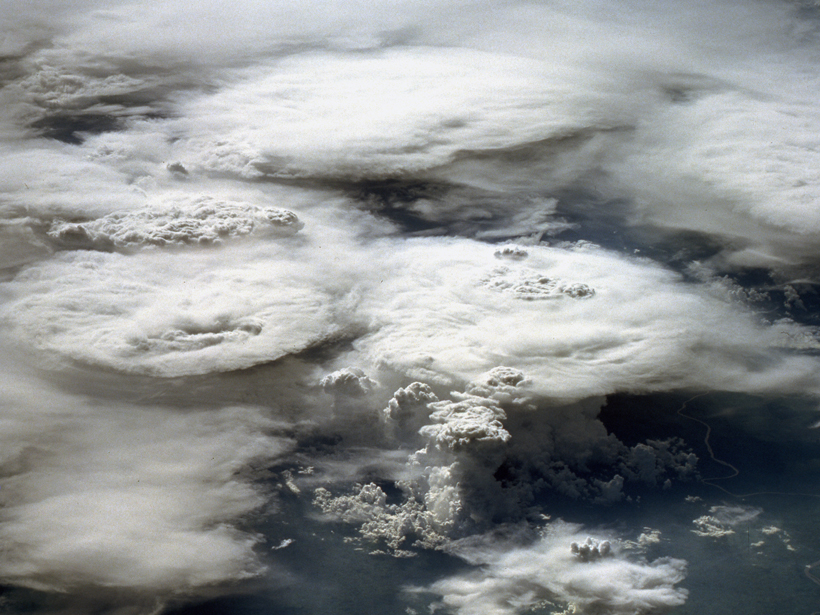Traditional global climate models have avoided directly simulating the role that clouds play in Earth’s climate systems. The nebulous billows of water droplets are generally too dynamic and small for classic models to resolve. Instead, these models have relied on numerical simplifications called parameterizations to stand in for the clouds’ aggregate effect.
Modern computational power is starting to change that. Now scientists can simulate, rather than approximate, cloud systems, and they are incorporating clouds into their regional and global climate models.
Hagos et al. set out to compare model simulations that included clouds with what played out in reality during observations as part of the Dynamics of the Madden-Julian Oscillation Experiment (AMIE/DYNAMO) field campaign. Their test bed was the Indian Ocean near Gan, one of the Maldives islands, where the researchers compared their model simulations to data collected by ships and ground-based radar instruments over the course of a month. The team found that their model was fairly accurate in predicting the observed relationship between cloud depth and size.
The study highlights the usefulness of directly comparing computational predictions to real data to validate simulations and elucidate biases, according to the authors. They add that when cloud models account for those biases in cloud and rain processes, weather forecasting and eventually climate modeling will become even more reliable. (Journal of Geophysical Research: Atmospheres, doi:10.1002/2014JD022143, 2014)
—Eric Betz, Freelance Writer
Citation: Betz, E. (2015), Researchers roll clouds into climate modeling, Eos, 96, doi:10.1029/2015EO027283. Published on 2 April 2015.
Text © 2015. The authors. CC BY-NC 3.0
Except where otherwise noted, images are subject to copyright. Any reuse without express permission from the copyright owner is prohibited.

